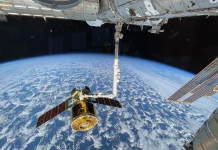Researchers from the University of Washington have explored the mysterious transition between “Snowball Earth” events and the following bursts of life evolution
These climatic cataclysms, appearing around 640 million years ago, saw our planet covered in ice sheets up to a kilometre thick, followed by rapid and enigmatic warming periods.
Understanding the cap carbonates
The “cap carbonates,” were a key focus in this study, these are geological remnants that formed as the ice sheets melted during the conclusion of snowball Earth.
These rocks, found in over 50 locations globally, including Death Valley and Siberia, offer crucial insights into Earth’s ancient atmosphere and ocean conditions. According to lead author Trent Thomas, these rocks preserve vital information about shifts in carbon dioxide levels and ocean acidity, crucial factors in understanding past climate dynamics.
Modelling earth’s climate recovery
The research uses models to simulate three key phases of Snowball Earth events. Initially, during the peak of glaciation, vast ice sheets reflected sunlight but allowed minimal exchange between the atmosphere and ocean. As carbon dioxide levels gradually accumulated in the atmosphere, global temperatures rose, triggering ice melt and significant environmental changes. This included the formation of a unique layer of freshwater atop denser ocean water, which temporarily altered ocean circulation patterns.
Senior author David Catling notes a profound consequence of these climatic shifts: the subsequent explosion of life complexity on Earth.
Prior to Snowball Earth events, life was largely microbial, persisting for over two billion years. These episodes of extreme climate disruption appear to have jump-started evolutionary processes, leading to the emergence of more complex organisms shortly thereafter.
The transition from “boring billion” years to the sudden appearance of animals in the fossil record shows the influence of climatic events on Earth’s biological evolution.
“We predict important changes in the environment as Earth recovered from the Snowball period, some of which affected the temperature, acidity and circulation of the ocean. Now that we know these changes, we can more confidently figure out how they affected Earth’s life,” Thomas said.
Looking ahead, the study opens avenues for further exploration into how early lifeforms survived and evolved during and after Snowball Earth events. Understanding these ancient periods of dramatic climate change could provide critical insights into how modern ecosystems might respond to ongoing and future climate shifts.











